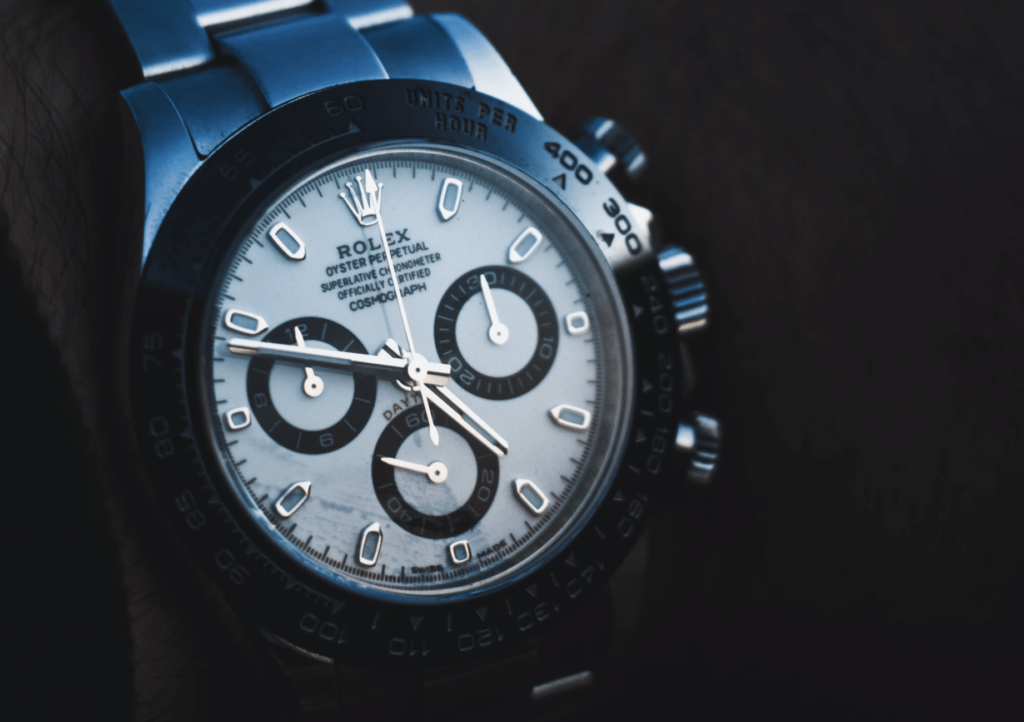There is more to the glittery holiday frocks and the right-on-trend loungewear that Fashion Nova offers up at unbeatably affordable prices – and with marked frequency (it rolls out 1,000 new styles each week) – than meets the eye. Behind its $25 denim and $35 velvet dresses is a web of “secret underpaid workers” laboring in factories in Los Angeles in order to churn out low-cost – but utterly Instagrammable – garments and accessories, according to the New York Times, the very ones that with the help of endorsements from the likes of Cardi B and the Kardashian/Jenners, and “a vast network of influencers and random selfie takers,” have made Fashion Nova a fashion destination in its own right.
According to a new report from the New York Times, which cites U.S. Department of Labor (“DOL”) investigations “conducted from 2016 through this year,” at least some of 13-year old Fashion Nova’s buzzy offerings are coming out of factories that flagrantly run afoul of U.S. labor laws. To be exact, the Times asserts that Fashion Nova’s clothing is “being made in dozens of factories [in Los Angeles] that owe $3.8 million in back wages to hundreds of workers,” with some allegedly paying “their sewers as little as $2.77 an hour.”
If the claims being lodged against Fashion Nova sound familiar, it is because they are, and the “secret” world of often-undocumented and almost-always-underpaid laborers in the domestic manufacturing sector is hardly a secret.
The public-facing claims against Fashion Nova might be the first against the company, itself, but in reality, these very-recent allegations against the new-wave fast fashion titan mirror those that have long-plagued many of the domestically-headquartered fast fashion giants that came before it, with the now-bankrupt Forever 21, in particular, being cited on more than one occasion by the DOL’s Wage and Hour Division in connection with its compliance – or better yet, its alleged lack of compliance – with the Fair Labor Standard Act (“FLSA”)’s minimum wage, overtime, and record-keeping laws.
(I wonder at what point rationality prevails and raises a red flag in the minds of consumers about the nature and the legality of (and at the very least, the ethics at play in connection with) the conditions in which even a pair of American-crafted jeans (as opposed to Bangladesh or Myanmar-made ones) could reasonably have been made when the price tag is jaw-droppingly low and the turnaround time from celebrity body-to-e-commerce site so neck-breakingly fast.
Taken alone, the retail prices (as distinct from the pre-mark up costs) associated with Fashion Nova, Forever 21, and other fast fashion retailers’ wares suggest that such labor practices should never reasonably have been a secret. However, this assumes that consumers are, in fact, thinking critically about their purchases and the system, when – in reality – it is easier, more convenient, and generally more common for consumers to look the other way (and/or feign ignorance) while making such purchases.)
As a representative for the Wage and Hour Division stated back in 2012 in light of an investigation of Forever 21, the DOL has “historically found repeated and widespread violations of the FLSA’s minimum wage, overtime and record-keeping provisions in Southern California’s garment industry,” which is precisely where Fashion Nova is located and where a sizable portion of the its remaining domestic manufacturing is carried out. (According to the Times, in 2018, “about 80 percent of [Fashion Nova’s] clothes were made in the United States, [but] its supply chain has shifted since then, and now the brand says it makes less than half of its clothes in Los Angeles.”)
Unsurprisingly, investigations into Forever 21’s operations – as well as those of Aldo, Urban Outfitters, Wet Seal, TJX Co., Charlotte Russe, and Ross, among others – revealed that its supply chain was hardly a beacon of transparency or clarity, and the same goes for Fashion Nova. Just as Forever 21 has relied significantly on a sweeping network of third-party suppliers to design and make its products, so, too, does Fashion Nova, whose wares come from a collection of “hundreds of manufacturers … which are hired by middlemen to produce garments for fashion brands,” according to the Times.
In situations like this, the most common response from large retailers is a convenient one: “We do not have control over – or legal responsibility for – the operations of our third-party suppliers.” Forever 21 has made assertions along these lines, as have fellow fast fashion giants like H&M and Zara, which have built multi-billion dollar businesses thanks to their pioneering of the modern fast fashion model. To some extent, given the sheer size and complexity of the modern manufacturing chain, which tends to span continents and involve a significant amount of contracting and often-undocumented subcontracting (which has been known to obfuscate the identify of the actual manufacturers), such a claim is not completely implausible.
The opportunity to pass-off blame (and legal liability) is bolstered by the reality that most mass-market apparel companies do not manufacture their own wares, and in many cases, even some of the largest and most sophisticated market entities, do not know who actually did. This is something that the collapse of Rana Plaza in 2013 made quiet clear. As Sarah Labowitz, the co-founder of Center for Business and Human Rights at NYU’s Stern School of Business, wrote in the wake of the garment factory tragedy, “What quickly became clear was the brands’ lack of visibility into their own supply chains,” which “was not an accident.”
The mystery, according to Labowitz, was how “brand-name clothing companies, highly valued in the market for their ability to control all manner of production challenges, [could] not know where their products are being made.” The answer is somewhat straightforward: in furtherance of an overarching system that neatly gives rise to the ability of multi-national retailers to disclaim liability in cases of legal action or worse, “brands place orders with hub factories, which then farm out production to a series of spoke factories.”
The brands “only see the hub factory, not the spokes—or the workers in them,” thereby, shielding themselves from the “‘open secret’ of subcontracting that made many factories invisible to the brands.” And such system are not limited to manufacturing centers in China and Bangladesh. They also exist on U.S. soil.
In terms of Fashion Nova, the Times states that the company “does not deal directly with factories, [and] instead, it places bulk orders with companies that design the clothes and then ship fabric to separately-owned sewing contractors, where workers stitch the clothes together and stick Fashion Nova’s label on them.” In other words, while the supply chain is not exactly uncomplicated, the design and manufacturing is completed out-of-house.
With the foregoing in mind, Fashion Nova’s general counsel Erica Meierhans said in a statement that “any suggestion that Fashion Nova is responsible for underpaying anyone working on our brand is categorically false.” In a tweet on Monday, the brand stated that it maintains “written agreements with all of our more than 700 vendors in which they commit to pay their employees and sub-contractors in strict alignment with California law.”
Technically, those statements are true, and Fashion Nova can likely side-step liability – on the basis of California state law – if it can position itself as a retailer of apparel and accessories as opposed to a manufacturer of them. That is because the “landmark” anti-sweatshop legislation that the state of California passed in 1999 leaves open a glaring loophole: the law, AB 633, focuses on “persons damaged by failure of a garment manufacturer, jobber, contractor, or subcontractor to pay wages or benefits.” Noticeably absent from that list of parties? Retailers.
(It is worth noting that the strong retail lobbying power that is the California Fashion Association “fought [the bill] like crazy,” president Ilse Metchek revealed years later. “In essence, a manufacturer became responsible for workers he or she did not hire, and is not in contact with.”)
As the Los Angeles Times reported in 2017, when faced with DOL action over the alleged labor and wage violations within its supply chain, Forever 21 benefitted from AB 633, the now 20-year old state law that “was originally intended to stamp out sweatshops but has come up short.” To be exact, “the law allows workers to recoup back wages from their factory boss, and any garment manufacturing company that does business with that person.”
In order to escape liability, “Forever 21 [characterized itself] as a retailer, not a manufacturer,” since all of the manufacturing for the garments and accessories it sold was completed outside of its chain of employees, and thus, it said that it has “always [been] at least one step removed from Los Angeles factories.” And such claims worked: as of 2017, “sewing factories and wholesale manufacturers have paid hundreds of thousands of dollars to settle those workers’ claims,” according to the LA Times, while, “Forever 21 has not had to pay a cent.”
As for the viability of another common response in situations like this – the classic “we didn’t know” defense, that is relevant when considering allegations of federal wage and labor law violations. As the New York Times aptly states, “Under federal law, brands cannot be penalized for wage theft in factories if they can credibly claim that they did not know their clothes were made by workers paid illegally low wages.”
While the FLSA, for instance, allows for “willful violations” (i.e., instances in which there is undisputed evidence that the company “had actual notice of the requirements of the FLSA by virtue of earlier violations, [an] agreement to pay unpaid overtime wages, and assurances of future compliance with the FLSA”) to be prosecuted criminally, it also enables companies to escape liability if they lacked “knowledge of circumstances that should have made them aware of any violations.”
Somewhat unsurprisingly, while retailers are largely able to avoid liability, they remain the driving force, in most cases, behind the falling prices of garments and accessories, and the escalating need to rely on dirt-cheap labor in order to remain competitive in the eyes of low cost-accustomed consumers, and simultaneously achieve attractive margins on the back end.
“This whole problem devolves from the retailer,” David Weil, the former head of the Labor Department’s Wage and Hour Division, told the LA Times in 2017. “They force the production costs to as low as they want because of their power in the supply chain, with the result of ultimately the workers bearing the whole cost and risk of the system.”











